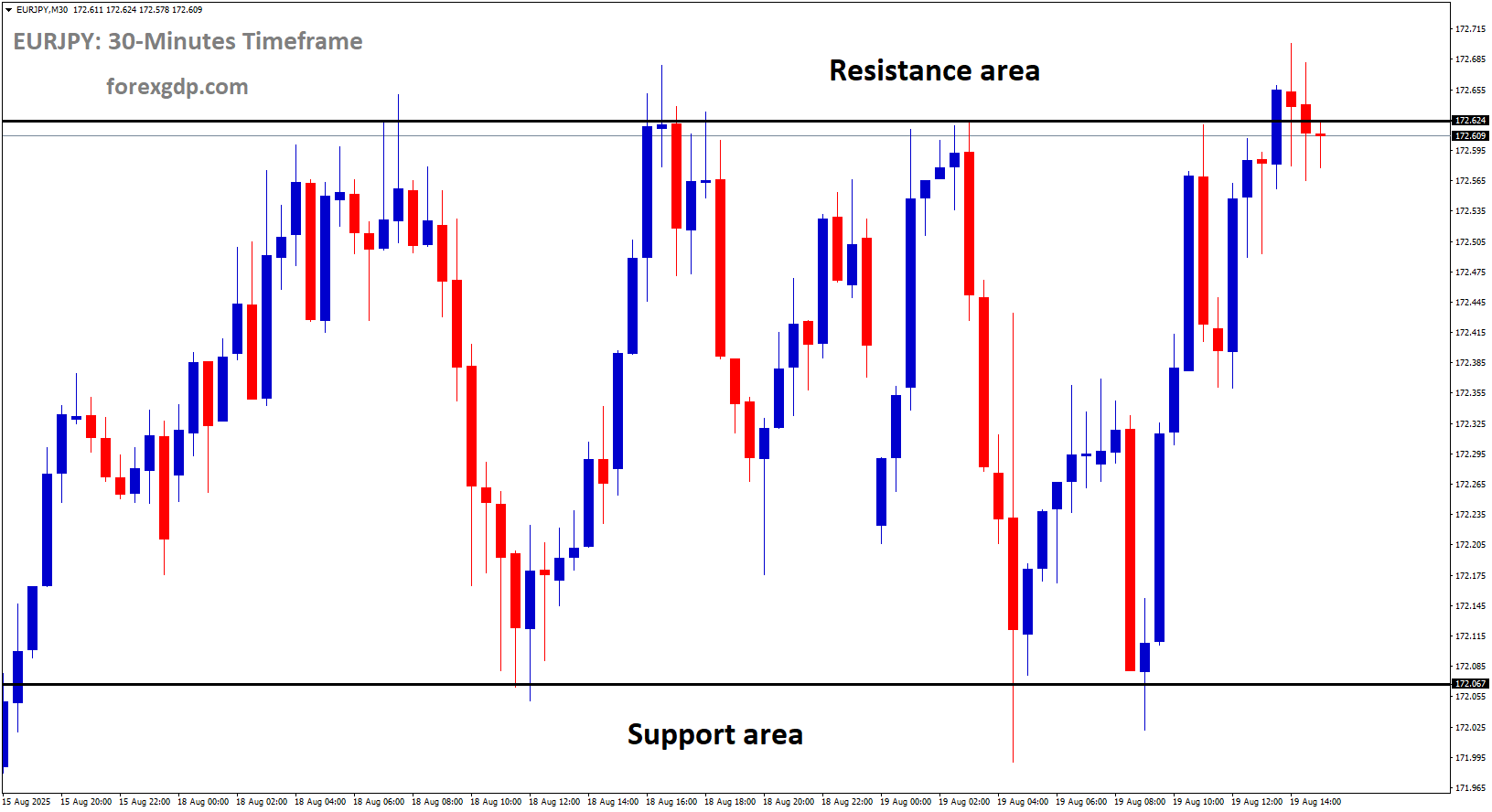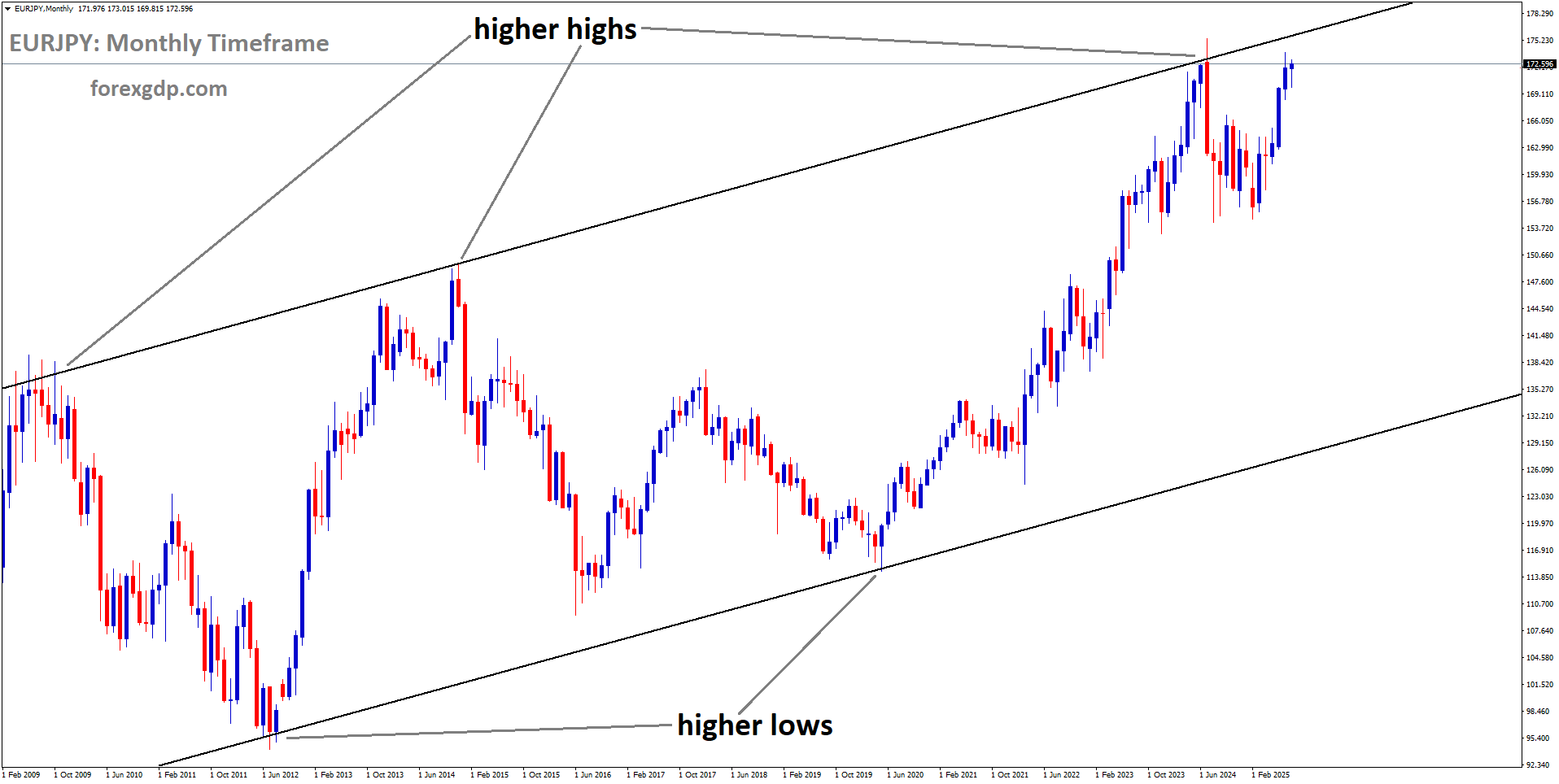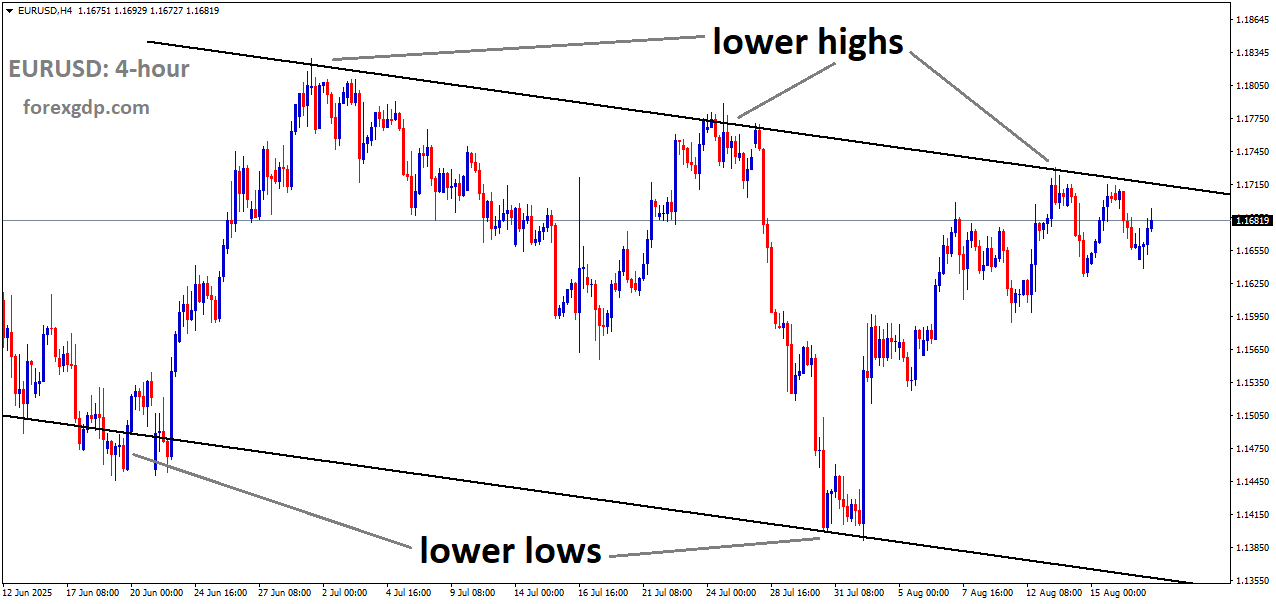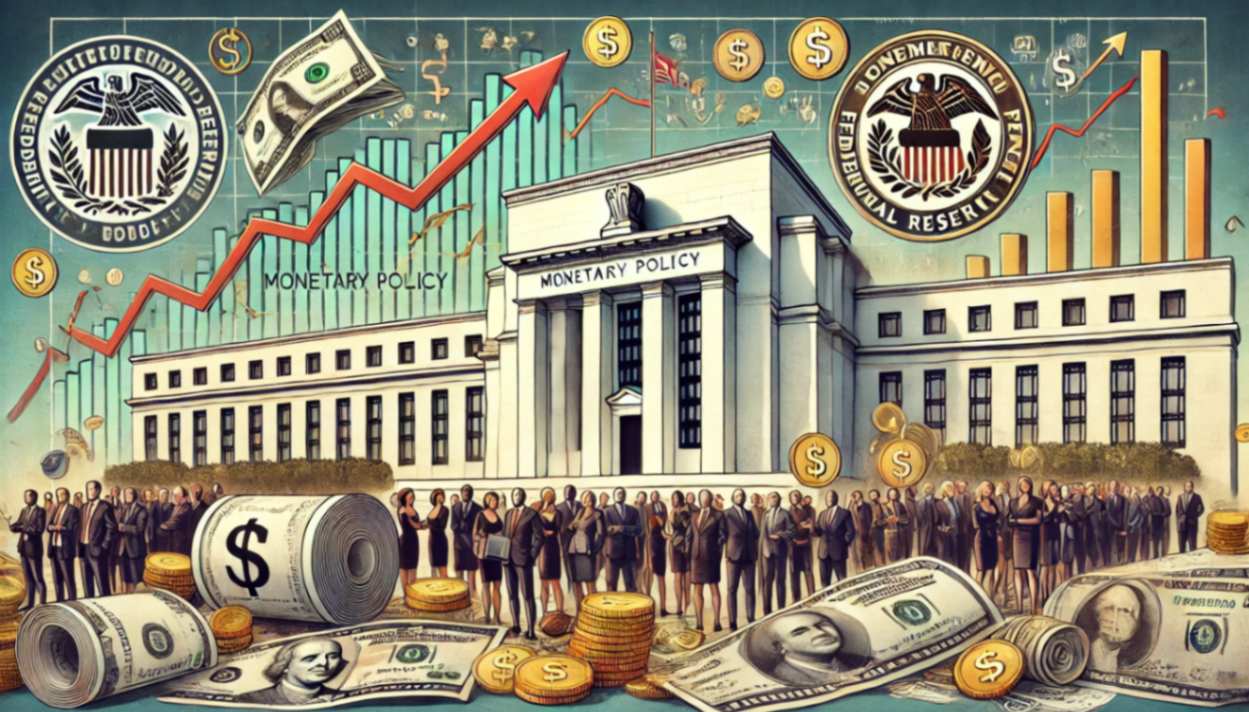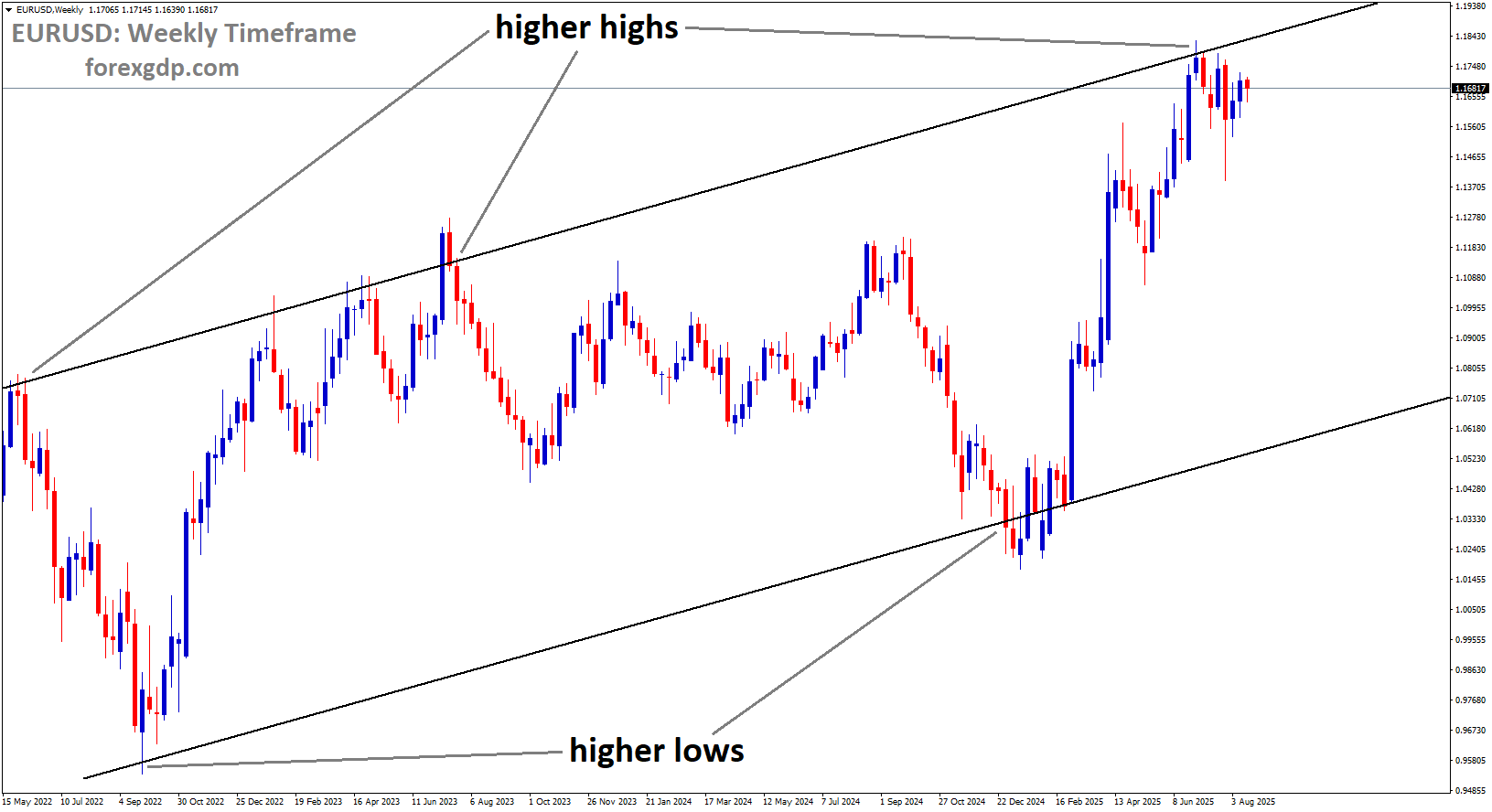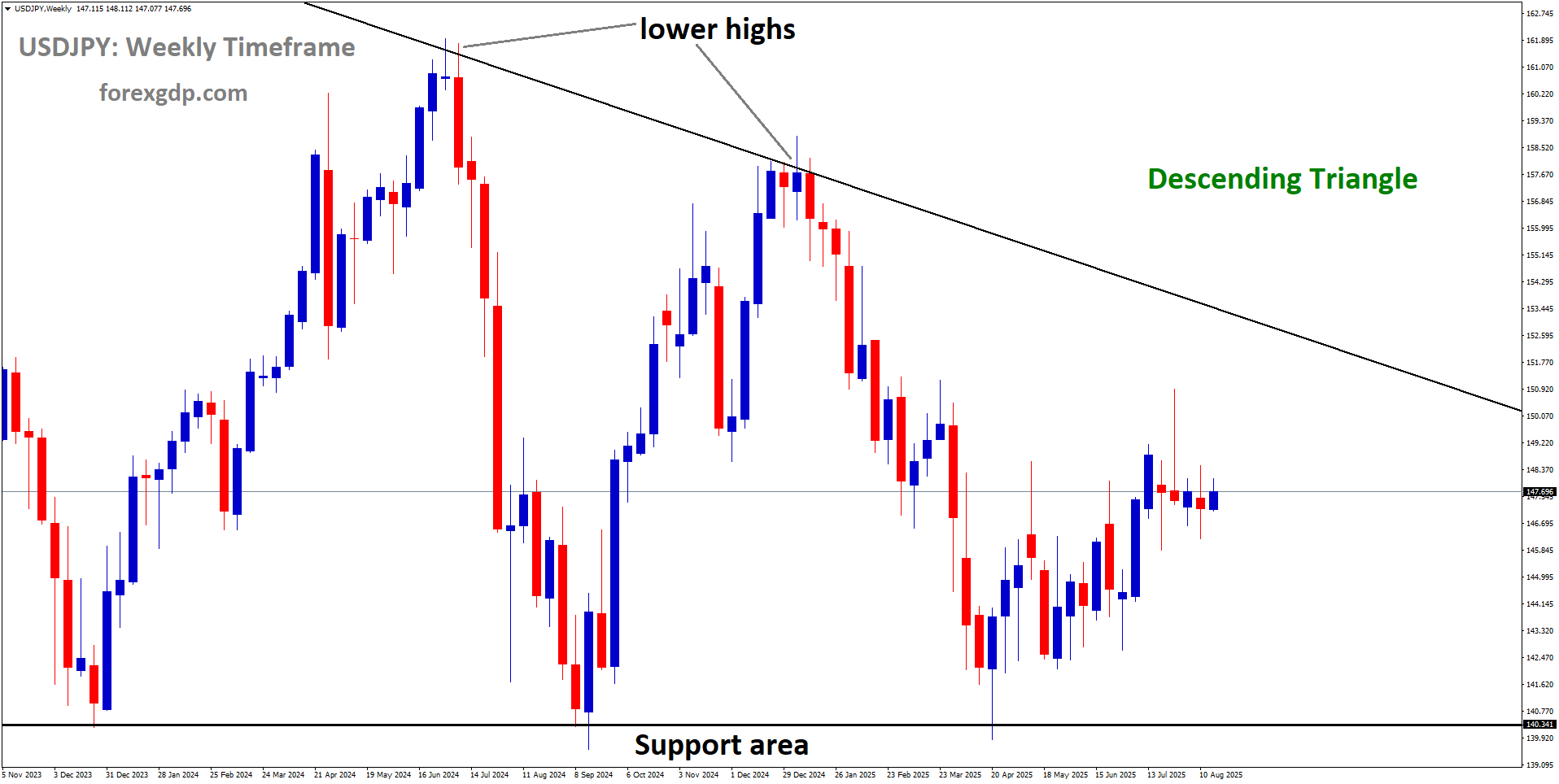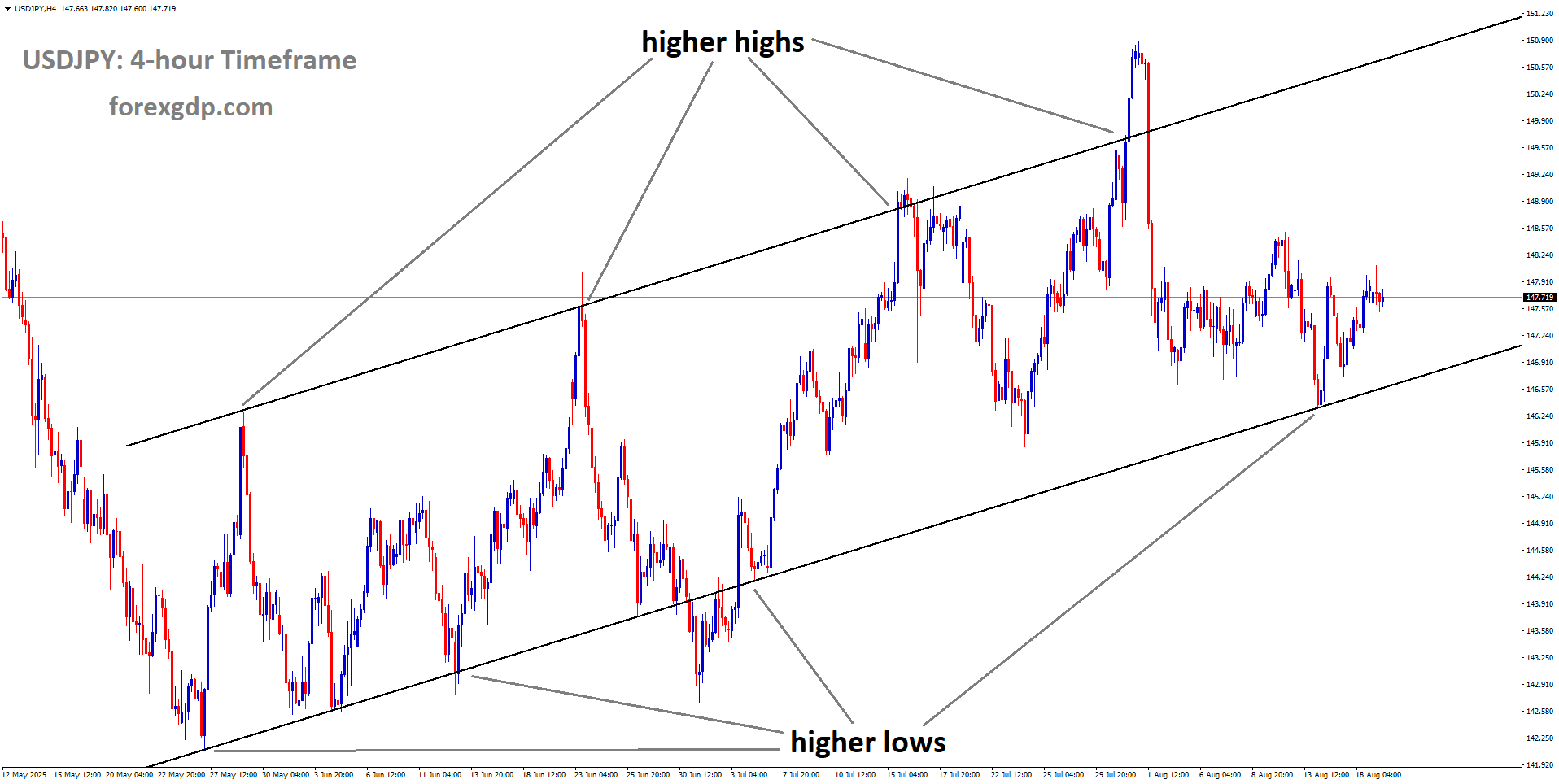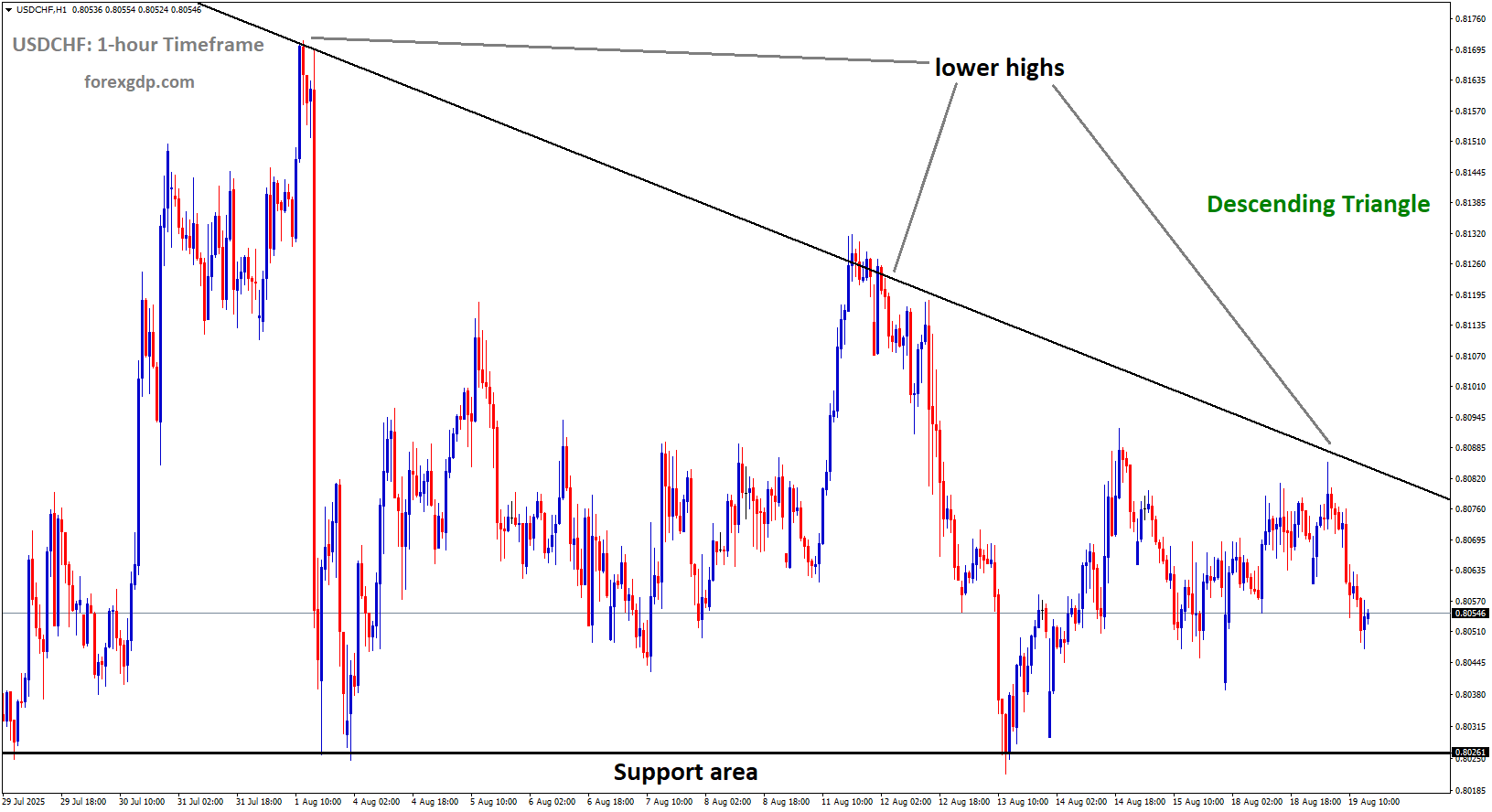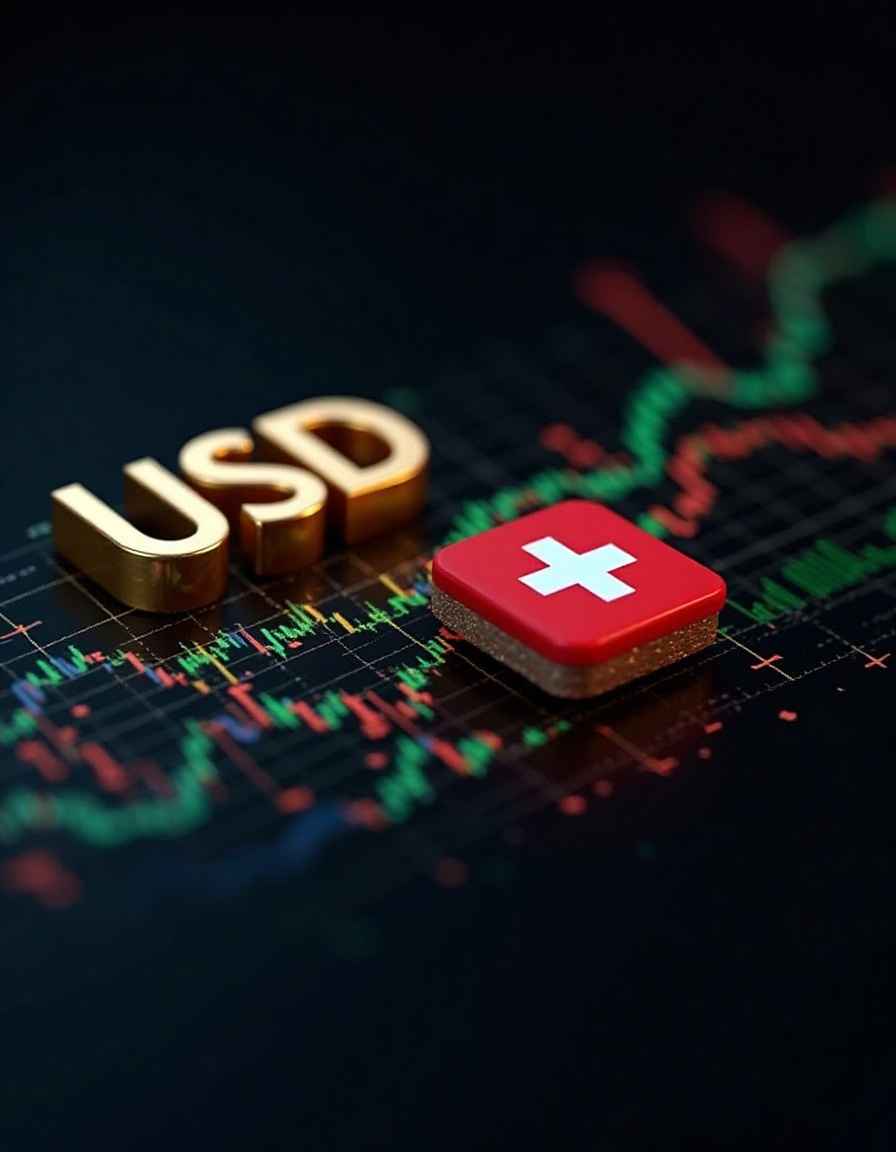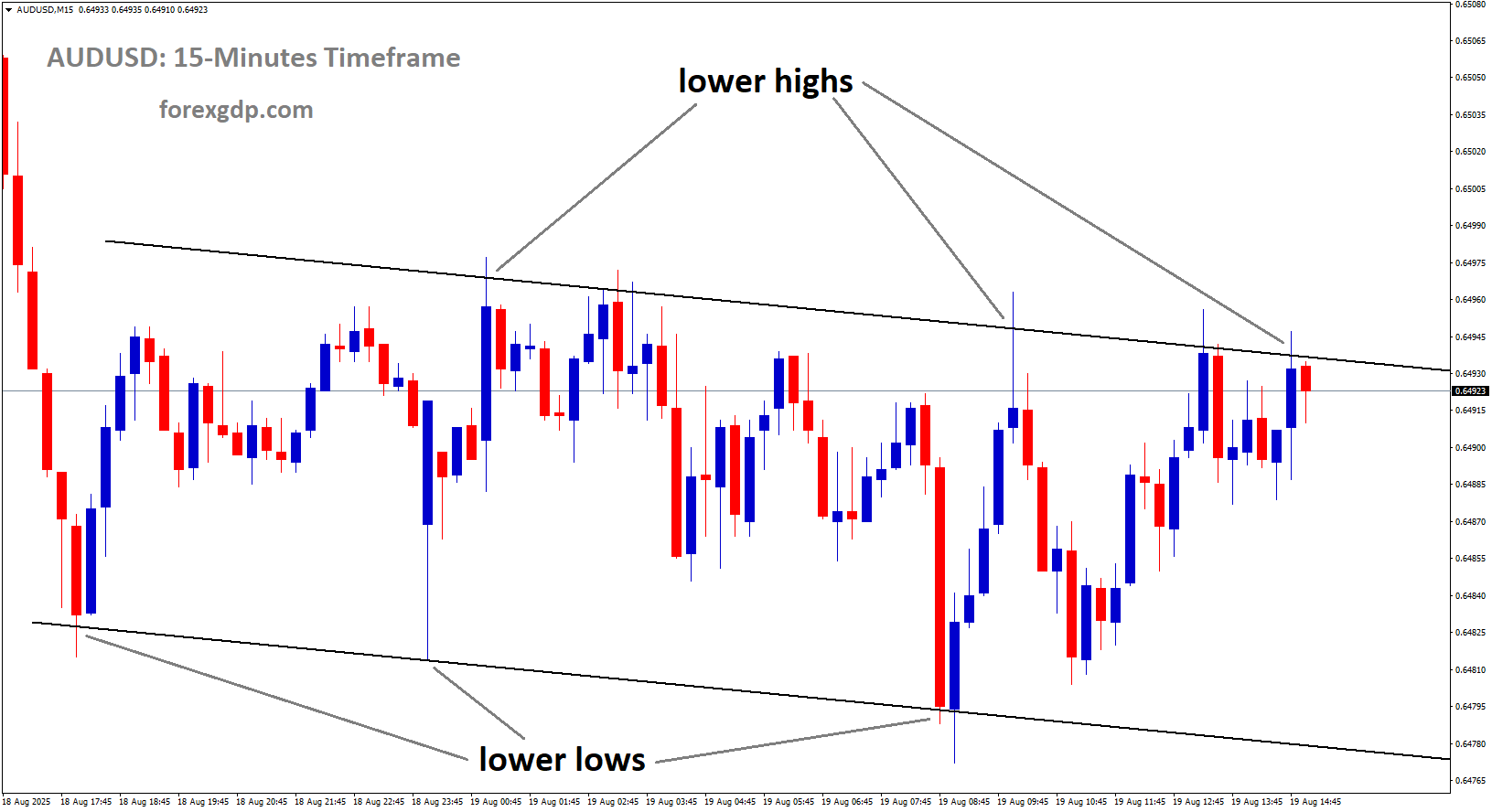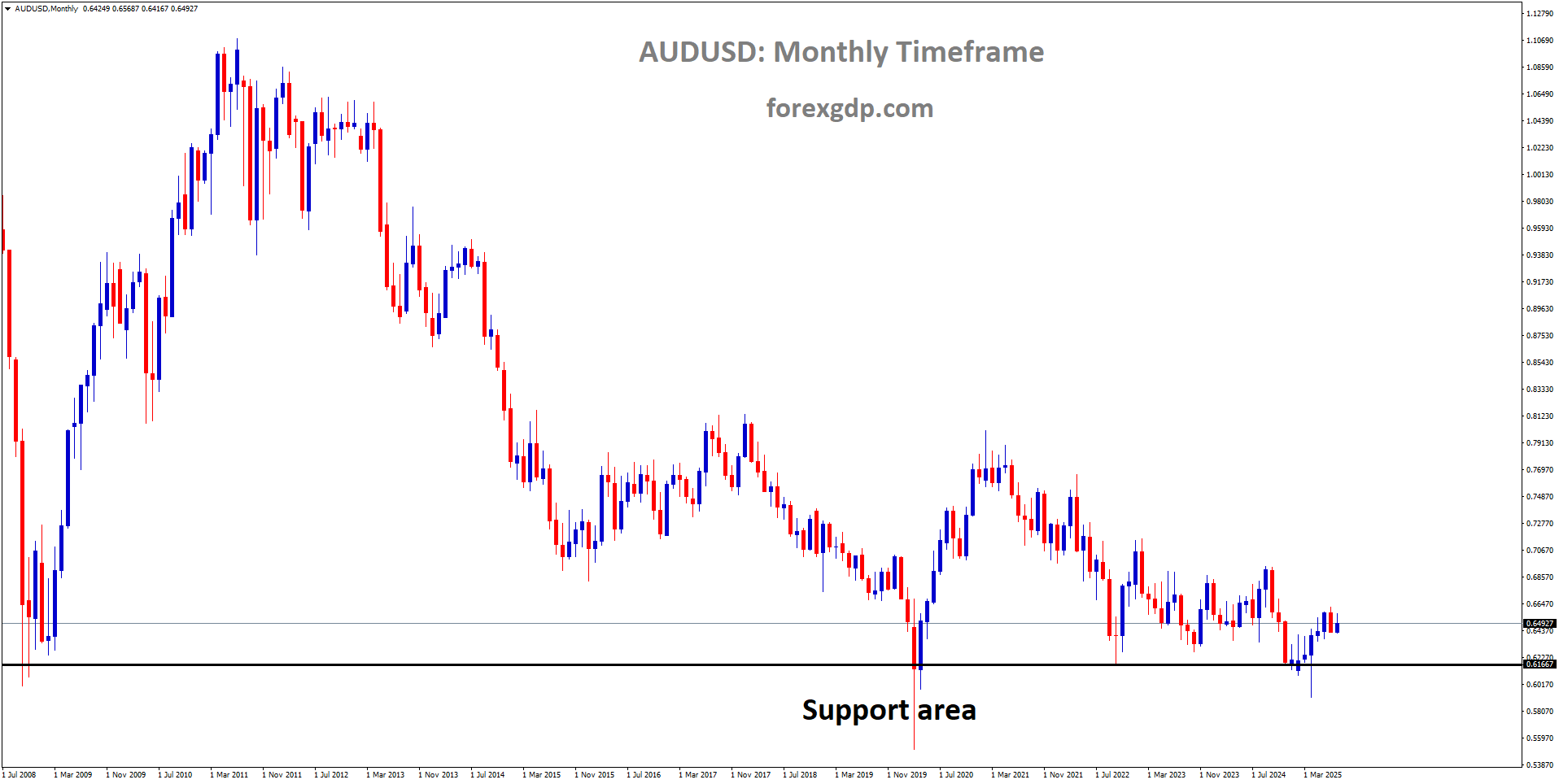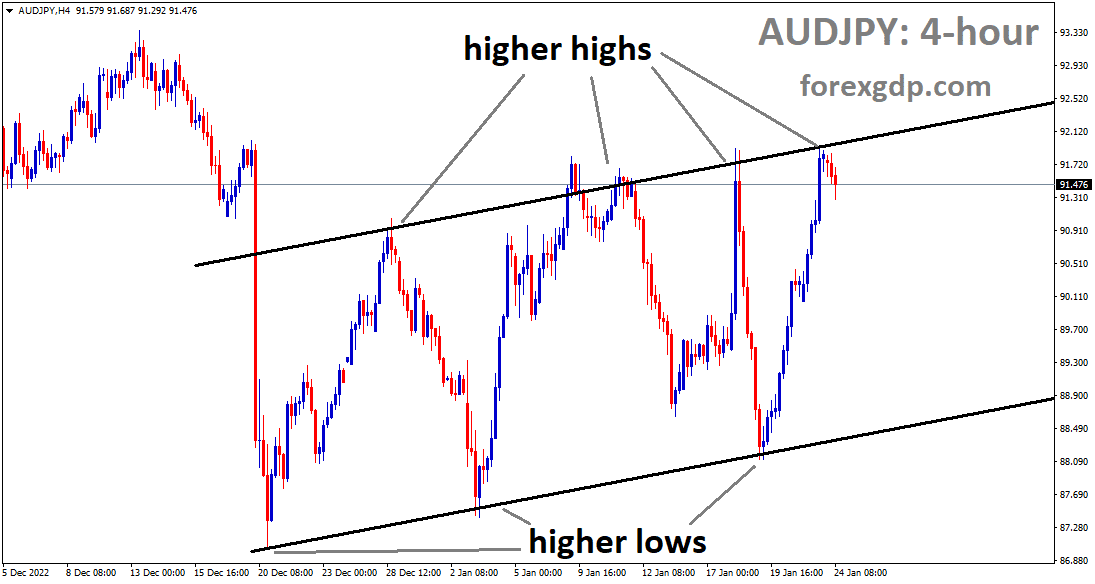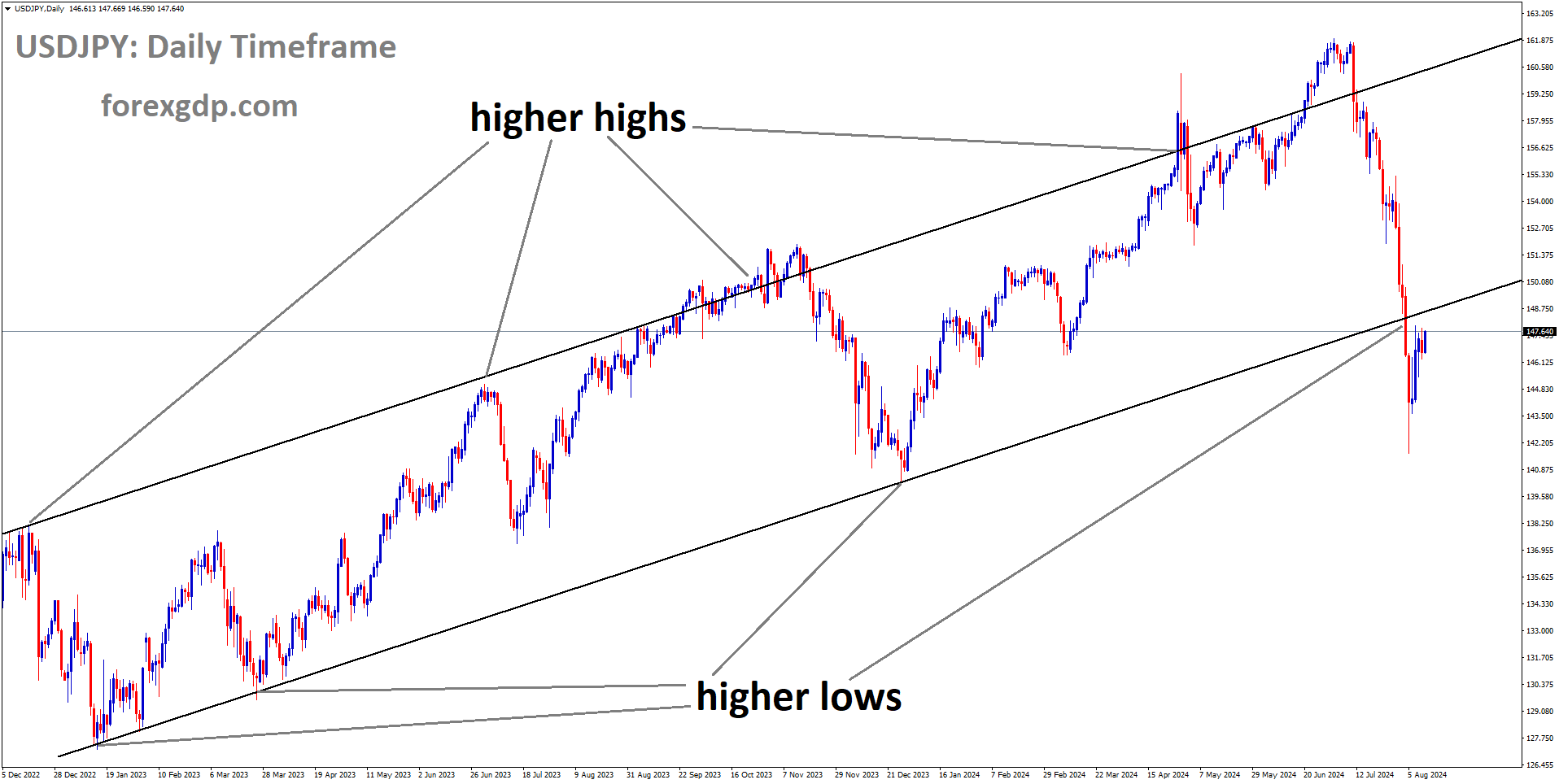EURJPY is moving in a box pattern, and the market has reached the resistance area of the pattern
Daily Forex Trade Setups Aug 19, 2025
Stay on top of market trends with our Daily Forex Trade Setups (Aug 19, 2025)
EURJPY Maintains Range with Growing Hopes for an Uptrend
The EUR/JPY currency pair has been moving sideways for a couple of days, leaving traders and investors curious about its next move. While the charts show a lack of momentum, the bigger picture is influenced by multiple factors—ranging from central bank decisions to global political developments. Let’s break it all down in a simple, engaging way without the technical jargon that often clutters financial discussions.
Why EUR/JPY Is Stuck in Neutral Mode
When we look at the EUR/JPY situation, one thing is clear: neither side of the pair is currently strong enough to push the other decisively. The Euro has some supportive factors behind it, while the Japanese Yen is facing its own set of challenges. Together, these forces are keeping the pair locked in a narrow trading range.
The Euro’s Backing from the ECB
One of the main reasons the Euro hasn’t lost ground is the expectation that the European Central Bank (ECB) will hold off on cutting interest rates any time soon. After a recent trade deal between the United States and the European Union, confidence around Europe’s economic outlook improved. This eased fears about tariffs dragging growth down and allowed the Euro to remain relatively stable.
The ECB’s current stance is that rates are likely to remain unchanged at least until the end of the year. For investors, that means the Euro retains some strength because the central bank isn’t rushing into a dovish move. Even without explosive growth in Europe, stability is sometimes enough to attract capital, especially in uncertain global conditions.
The Yen’s Dilemma: Between Uncertainty and Hope
On the Japanese side of the story, things are a little more complicated. The Yen has traditionally been seen as a safe-haven currency. In times of crisis or geopolitical risk, investors tend to buy Yen. But recently, this usual behavior hasn’t been so clear.
Bank of Japan’s Interest Rate Puzzle
The Bank of Japan (BoJ) is in a difficult position. At its July meeting, it revised its inflation forecast upward, hinting that it could finally move away from its ultra-loose monetary policy by the end of the year. That would mean a potential interest rate hike, something Japan hasn’t seriously considered in a very long time.
The problem? Markets don’t know exactly when that hike might come. This uncertainty keeps traders from betting too aggressively on the Yen. Without clear direction, the currency struggles to gain strong momentum against the Euro.
Impact of Geopolitical Hopes
Another factor holding the Yen back is optimism about a possible peace deal between Russia and Ukraine. Normally, conflict and instability make investors rush into safe havens like the Yen. But if peace looks achievable, the safe-haven demand weakens. This reduces the Yen’s strength further, giving the Euro more room to hold its ground in the pair.
Key Events That Could Change the Story
Even though EUR/JPY is range-bound right now, upcoming events could bring fresh direction.
ECB Leadership Speeches
All eyes are on Christine Lagarde, the President of the ECB. Her speeches often provide clues about how the central bank is thinking. Any hint that the ECB could adjust its policy stance earlier than expected might give the Euro a lift. On the other hand, if her tone is cautious or hints at economic slowdown, the Euro could come under pressure.
PMI Data from Europe
Another piece of the puzzle is the upcoming release of flash Purchasing Managers’ Index (PMI) numbers. PMI reports are important because they show how businesses in manufacturing and services are performing. If the data suggests that Europe’s economy is holding up well, it would further support the Euro. Weak numbers, however, might revive concerns and weigh on the currency.
What Traders and Investors Should Keep in Mind
For now, the EUR/JPY pair doesn’t seem ready for a breakout. The fundamentals on both sides are canceling each other out, creating a balanced situation. But that doesn’t mean things will stay quiet forever.
-
Short-Term Outlook: Expect the pair to remain sideways until new data or announcements shake things up. Without a clear catalyst, both Euro bulls and Yen supporters are hesitant to push too hard.
-
Medium-Term Outlook: If the ECB stays firm on holding rates steady and the BoJ continues to delay its first hike, the Euro may slowly gain an edge. But a surprise move from the BoJ could flip the script quickly.
EURJPY is moving in an uptrend channel
-
Long-Term Consideration: Much will depend on how global political tensions play out. A confirmed peace deal in Eastern Europe could keep the Yen weak, while renewed instability could quickly bring safe-haven demand back into play.
Final Summary
The EUR/JPY cross has been caught in a tug-of-war between two forces: the Euro supported by a cautious but steady ECB, and the Yen weighed down by uncertainty around the Bank of Japan’s next move. Add in global political factors like the Russia-Ukraine conflict, and it’s no wonder the pair is stuck in a sideways range.
Looking ahead, the direction of this currency pair will likely be shaped by upcoming ECB commentary, fresh PMI data, and clarity (or lack thereof) from the Bank of Japan. For now, patience is key. The market is waiting for stronger signals before making its next big move, and when those signals arrive, EUR/JPY could finally find the momentum it has been lacking.
EURUSD drifts lower while traders await European data and geopolitical clarity
When it comes to global currencies, the Euro and the US Dollar are often at the center of attention. These two currencies don’t just reflect financial strength—they also mirror the political climate, global stability, and even energy security. Recently, the EUR/USD pair has been struggling, not because of technical market movements, but largely due to the intense political backdrop surrounding the Ukraine-Russia conflict and international diplomacy.
Let’s break down what’s going on, why the Euro is having a hard time, and what could possibly turn things around.
EURUSD is moving in a descending channel
High-Stakes Diplomacy: Trump, Putin, and Zelenskyy in the Spotlight
At the heart of the current discussion is a potential trilateral meeting involving U.S. President Donald Trump, Russian President Vladimir Putin, and Ukrainian President Volodymyr Zelenskyy. Preparations for such a meeting have already begun, signaling that the world might be inching closer to new negotiations on the Ukraine-Russia war.
The significance of this cannot be overstated. A war that has dragged on for years has strained Europe in countless ways, especially because of its heavy reliance on imported energy. If a diplomatic breakthrough is achieved, it could provide a much-needed boost to the Euro.
What makes this summit even more important is the involvement of key European leaders. French President Emmanuel Macron, German Chancellor Friedrich Merz, European Commission President Ursula von der Leyen, and UK Prime Minister Keir Starmer were all present at recent discussions. Their attendance highlights just how crucial this moment could be for Europe’s economic and political future.
Why the Euro Is Struggling
So, why is the Euro under pressure right now despite the hopeful signals of peace talks?
One major reason lies in the strength of the US Dollar. Whenever there are global uncertainties, investors tend to lean toward the Dollar because it’s seen as a safe haven. With new discussions about resolving the war and ensuring security guarantees, the Dollar has picked up extra support. That makes it tougher for the Euro to gain momentum in the short term.
But that doesn’t mean the Euro is doomed. In fact, its weakness right now may simply be temporary. If negotiations between Ukraine and Russia progress in a meaningful way, the tables could turn quickly. The Euro would have room to strengthen as Europe moves closer to political stability and reduced energy risks.
The Fed Factor: How U.S. Policy Shapes the Dollar
Another layer to this story is the U.S. Federal Reserve. The Fed’s stance on interest rates always influences the Dollar, which in turn impacts the EUR/USD exchange rate. Recently, U.S. economic data like producer inflation and retail sales have suggested the economy is holding steady.
Despite this, markets are still expecting the Fed to adopt a more dovish tone, with a high probability of a rate cut later this year. This is where the upcoming Jackson Hole Economic Policy Symposium becomes important. Traders and investors will be listening closely to Fed Chair Jerome Powell’s speech, hoping for clues about the direction of U.S. monetary policy. If Powell hints at easing, the Dollar could lose some of its current strength, giving the Euro more room to breathe.
Europe’s Energy Puzzle and Economic Outlook
While U.S. monetary policy plays its part, the European Union’s economic situation is equally critical. The EU relies heavily on imported energy, much of which has been disrupted by the ongoing conflict in Ukraine. That’s why any sign of a peace deal automatically shines brighter for the Euro than almost anything else.
The week ahead is also filled with key economic updates from the Eurozone. These include:
-
Inflation data for July – Investors will be watching to see if prices are cooling down or still rising.
-
Flash PMIs for August – These purchasing manager indices give a quick view of how businesses are performing across industries.
-
Germany’s GDP report – Since Germany is the largest economy in the EU, its performance has a direct impact on the Euro’s overall outlook.
If these reports show resilience in the European economy, they could further support the Euro, especially if paired with positive developments on the political front.
What Could Change the Euro’s Trajectory?
The Euro may be struggling right now, but there are clear scenarios where it could turn the corner:
EURUSD is moving in an uptrend channel, and the market has reached a higher high area of the channel
-
A Breakthrough in Peace Talks
If the trilateral meeting results in even partial progress toward ending the Ukraine-Russia conflict, confidence in the Euro could rise sharply. The EU’s reduced energy risks would instantly make the Euro more attractive to global investors. -
Fed Policy Shifts
Should the Fed move forward with rate cuts, the Dollar may lose some of its current dominance. That would naturally give the Euro an opportunity to regain strength. -
Positive EU Economic Data
Stronger-than-expected inflation control, business growth, or GDP results could give the Euro a solid lift. With Europe working to stabilize its economy, good news from these reports can’t be underestimated.
Final Summary
The EUR/USD pair’s current struggles aren’t about technical charts or numbers—it’s about politics, energy security, and the tug-of-war between the Euro and the Dollar on the global stage. The ongoing Ukraine-Russia war has been a major drag on Europe’s economy, but the potential for new peace negotiations offers a glimmer of hope.
At the same time, U.S. monetary policy will continue to play a huge role in shaping how strong or weak the Dollar remains. If the Fed signals a softer stance, it could open the door for the Euro to strengthen. Meanwhile, upcoming EU economic data will provide more clues on whether the Eurozone can hold its ground amid global challenges.
For now, the Euro is subdued, but the stage is set for potential change. The combination of diplomacy, central bank decisions, and Europe’s own economic resilience will determine whether the Euro finally finds its footing in the weeks ahead.
USDJPY Slips as Diverging BoJ and Fed Policies Shape Market Sentiment
When it comes to global currencies, the Japanese Yen (JPY) often stands out for its unique role as a safe-haven asset. Lately, though, the Yen has been caught in a tug-of-war between central bank policies, geopolitical headlines, and investor sentiment. Let’s break down what’s going on, why the Yen is moving the way it is, and what could be next.
USDJPY is moving in a descending triangle pattern
The Bank of Japan’s Policy Path – A Game Changer
For years, Japan stuck with ultra-low interest rates while other economies pushed theirs higher. But now, things are shifting. The Bank of Japan (BoJ) has started showing signs that it’s ready to step away from its long-standing easy-money stance. At its last meeting, the BoJ revised its inflation outlook, signaling that if the economy continues to grow and inflation remains steady, interest rate hikes could come by year’s end.
This matters because higher interest rates usually strengthen a currency. When investors see better returns, they’re more likely to move money into that currency. For the Yen, this policy shift is like a long-awaited boost after years of weakness.
Why BoJ’s Hawkish Shift Stands Out
Unlike Japan, the U.S. Federal Reserve looks more likely to start cutting rates later this year. That creates a big contrast: while the BoJ is considering raising rates, the Fed might be lowering them. This divergence is giving the Yen some support, even though it hasn’t sparked a full-on rally yet.
Geopolitical Winds: Peace Talks and Market Sentiment
Currencies don’t just move because of central banks. Global events play a massive role, and the Yen, being a safe-haven, reacts strongly to headlines. Recently, hopes for peace between Russia and Ukraine grabbed attention after news of preparations for direct talks between leaders. Normally, geopolitical tension pushes investors toward safer assets like the Yen, but when peace feels more possible, demand for the Yen tends to ease.
It’s a tricky balance: the same event that boosts global optimism can reduce safe-haven demand for the Yen. In this case, hopes for peace capped how much strength the Yen could gain, even as central bank policies tilted in its favor.
The Fed’s Next Move – A Key Factor for the Yen
While the BoJ’s stance is important, the Yen’s story is incomplete without looking at the Fed. In the U.S., inflation is still present, but there are signals that it’s cooling down. That has traders betting heavily on a rate cut in September. Tools like the CME FedWatch show strong market expectations for not just one, but possibly multiple cuts over the next year.
For the Yen, this is a double-edged sword. On one hand, lower U.S. rates reduce the dollar’s appeal, giving the Yen a relative advantage. On the other hand, if U.S. economic data stays resilient, it could limit how much the Fed actually cuts, keeping the dollar stronger than expected. That uncertainty keeps Yen bulls cautious.
Political and Domestic Uncertainty in Japan
Beyond central bank moves, Japan’s internal politics have thrown in some twists. The ruling Liberal Democratic Party faced losses in recent elections, raising questions about political stability. On top of that, concerns linger over how higher U.S. tariffs might affect Japan’s export-driven economy.
If Japan’s economy slows under trade pressure, the BoJ might hesitate to tighten policy too quickly. This is one reason traders haven’t gone all-in on the Yen, even with the BoJ’s hawkish tone. For now, the political backdrop adds another layer of hesitation.
Upcoming Events That Could Drive the Yen
Markets rarely stand still, and several upcoming events could shape the Yen’s next direction:
-
FOMC Meeting Minutes & Powell’s Speech: Investors will be hanging on every word for clues about the Fed’s true stance.
-
Global PMIs: These surveys give a snapshot of economic health across major economies and could spark volatility.
-
U.S. Housing Data: While not the biggest driver, housing numbers still feed into the overall picture of U.S. economic strength.
Each of these events can push investor sentiment one way or another, directly influencing how the Yen trades.
Why Investors Are Sitting on the Fence
Right now, the Yen is in an unusual spot. On one side, it has strong support from the BoJ’s hawkish tilt and the possibility of U.S. rate cuts. On the other side, peace hopes in Europe, domestic political uncertainty, and caution around economic data are preventing a clear rally.
USDJPY is moving in an uptrend channel
This push-and-pull is why traders aren’t rushing to take strong positions. Instead, they’re waiting for more clarity – either from the Fed, the BoJ, or the geopolitical front – before making big moves.
Final Summary
The Japanese Yen is currently balancing between optimism and caution. The BoJ’s shift toward higher rates is giving the currency a supportive tailwind, especially as the Fed looks more likely to cut rates in the near future. However, political challenges in Japan, hopes for a Russia-Ukraine peace deal, and the constant uncertainty of global markets are holding back any decisive rally.
For now, the Yen remains in a waiting game. Investors are watching the next round of speeches, economic data, and geopolitical developments closely before choosing a direction. The story of the Yen isn’t just about one factor—it’s a mix of policy divergence, global headlines, and market psychology. And that’s exactly why the coming months could prove pivotal for its next big move.
USDCHF Falters as Peace Negotiations Undermine Safe-Haven Demand
When it comes to currency movements, it’s never just about numbers on a chart. Behind every swing lies a combination of politics, economics, and global sentiment. The USD/CHF pair, which represents the US Dollar against the Swiss Franc, has recently shown signs of struggle. But to really understand what’s going on, we need to dive deeper into the bigger picture — from peace talks in Europe to shifting expectations around the Federal Reserve’s next move.
The Russia-Ukraine Factor and the Safe-Haven Swiss Franc
The Swiss Franc has long been considered one of the world’s safest currencies. In times of uncertainty, global investors often flock to it for stability. But what happens when there’s a glimmer of hope on the geopolitical front?
Lately, optimism about a possible peace deal between Russia and Ukraine has softened demand for the Franc. According to recent developments, the United States has stepped up to support Ukraine with promises of security guarantees. In fact, a coalition of 30 nations has already committed to coordinating actions alongside the US to ensure Ukraine’s safety.
USDCHF is moving in a descending triangle pattern, and the market has fallen from the lower high area of the pattern
Adding to this optimism, US President Donald Trump has floated plans for a summit between Russian President Vladimir Putin and Ukrainian President Volodymyr Zelenskiy. The fact that Trump personally discussed this idea with Putin after talks with European leaders highlights just how serious the effort is.
This shift in tone matters for currencies because if tensions ease, the need for safe-haven assets like the Swiss Franc naturally declines. Investors become more willing to take risks, and the Franc tends to lose some of its upward pull.
US Economy: Strong Data and the Fed’s Dilemma
While geopolitics play their role, the US Dollar has its own story to tell. In recent weeks, economic data out of the United States has surprised many. Wholesale prices in July jumped more than expected, while retail sales figures came in stronger as well.
At first glance, strong economic data usually signals a healthy economy, but in the context of monetary policy, it complicates things. The Federal Reserve, which has been under pressure to cut interest rates, now faces a dilemma. Hot inflation and resilient consumer spending make it harder for the Fed to justify aggressive rate cuts.
Just a short while ago, markets were leaning toward the possibility of a hefty 50-basis-point cut. But now, traders are dialing back those expectations. Current estimates suggest that the Fed is more likely to stick to smaller, gradual adjustments, with a significant chance of a rate cut in September still on the table.
Why does this matter for USD/CHF? Because interest rate expectations directly influence the value of the Dollar. If the Fed looks less dovish, the Dollar gains strength, making it more difficult for the Franc to rally against it.
Investor Sentiment and What’s Ahead
For now, USD/CHF sits in a delicate position. On one side, peace optimism weighs on the Swiss Franc. On the other, strong US economic data lends support to the Dollar. This tug-of-war means the pair could remain somewhat balanced in the short term.
But investors aren’t just focused on the latest headlines. They’re also waiting for clarity from one of the biggest events on the Federal Reserve’s calendar: the Jackson Hole conference. Scheduled for later this week, the annual meeting gathers central bankers, economists, and policymakers to discuss the future of monetary policy.
Even a few carefully chosen words from Fed officials can shift market sentiment. If the tone leans dovish, traders may interpret it as a sign that rate cuts are back on the table sooner than expected, dragging the Dollar lower. On the flip side, a more cautious stance could strengthen the Dollar, keeping USD/CHF from falling too far.
What Traders Are Watching Closely
-
Geopolitical negotiations: Any progress toward a Russia-Ukraine truce will continue to impact the safe-haven appeal of the Franc.
-
Fed signals: The Jackson Hole conference and upcoming speeches from Fed officials could reshape expectations around rate cuts.
-
Market psychology: Beyond hard data, investor mood plays a huge role in how currencies move. Optimism or fear can sway demand for both the Dollar and the Franc.
Final Summary
The recent moves in USD/CHF highlight how currencies are influenced by much more than technical charts or short-term market patterns. Behind the numbers lies a mix of global politics, economic strength, and central bank decisions.
For the Swiss Franc, optimism about peace talks between Russia and Ukraine has taken away some of its safe-haven shine. Meanwhile, the US Dollar is finding support from strong economic data, though traders remain cautious about what the Federal Reserve will signal next.
The balance between these forces means USD/CHF could remain caught in a push-and-pull scenario in the near future. Investors will keep a close eye on both geopolitical developments and monetary policy updates to gauge where the next big move might come from.
At the end of the day, the story of USD/CHF isn’t just about exchange rates — it’s a reflection of how politics, economics, and human sentiment shape the financial world.
AUDUSD slips despite rising confidence, markets eye RBA for further support
The foreign exchange market has always been shaped by a mix of local economic data, central bank actions, and global political events. Recently, the Australian Dollar (AUD) has faced renewed pressure despite signs that consumer confidence at home is improving. On the global stage, shifting US policy, geopolitical negotiations, and debates around interest rate directions are shaping investor sentiment and currency flows. Let’s dive deeper into what’s happening and why the Australian Dollar seems to be struggling at this moment.
AUDUSD is moving in a descending channel, and the market has reached the lower high area of the channel
Consumer Confidence in Australia Sees an Uptick
One of the more positive developments in Australia is the boost in Westpac Consumer Confidence, which rose by 5.7% in August. This marks the highest level of optimism among Australian households since early 2022. After a long stretch of weak sentiment, this jump has been seen as a sign that people are slowly regaining trust in the economy.
Matthew Hassan, a senior economist, highlighted that this improvement could signal the end of a prolonged period of consumer pessimism. However, he also pointed out that sustaining this momentum may require additional support from policymakers in the future. The Reserve Bank of Australia (RBA) has already cut interest rates multiple times since January, aiming to ease financial pressures and stimulate spending.
Still, despite this glimmer of positivity, the Australian Dollar has continued to weaken. The main reason is that global factors, especially those tied to the US Dollar, are currently outweighing local improvements.
Why the US Dollar is Dominating the Currency Market
The US Dollar (USD) has been on the rise, and that’s bad news for currencies like the AUD. There are several reasons behind this:
1. Political Developments on the Global Stage
US President Donald Trump recently began preparations for a trilateral meeting with Russian President Vladimir Putin and Ukrainian President Volodymyr Zelenskyy. The aim of such talks would be to explore peace negotiations and security guarantees, especially in the context of territorial disputes. These discussions, while complex, have boosted global attention on US diplomatic leadership, indirectly supporting the US Dollar.
Ukraine’s President Zelenskyy also made it clear that his country welcomes stronger US involvement in ensuring peace and security. He confirmed new arms deals with the US and highlighted the need for long-term guarantees, which strengthens America’s position in global affairs.
2. Anticipation Around the US Federal Reserve
Markets worldwide are watching the Jackson Hole Economic Policy Symposium, where Fed Chair Jerome Powell is expected to give important signals about future monetary policy. Traders are betting that the Fed may cut interest rates in September, with many believing a 25 basis point reduction is highly likely. Some voices, including US Treasury Secretary Scott Bessent, even suggest that a larger cut of 50 basis points could be on the table.
This possibility of looser US monetary policy might seem like it should weaken the Dollar. However, the opposite often happens in the short term. The speculation and safe-haven demand for the USD, especially when paired with political uncertainty, tend to keep the Dollar strong.
3. Trade Tensions and Tariffs
The Trump administration has also been expanding tariffs on steel, aluminum, and even technology-related products like semiconductors. By broadening its trade barriers, the US signals a tougher stance in international trade negotiations, particularly with China. While these moves can create market uncertainty, they often boost safe-haven flows into the Dollar as investors look for stability in the face of trade wars.
Australia’s Monetary Policy: Supportive but Limited
The Reserve Bank of Australia (RBA) has been working to ease financial conditions, with another 25 basis point interest rate cut recently announced. This brings its cash rate lower in hopes of boosting growth, supporting employment, and encouraging consumer spending.
However, compared to the Fed’s dominance and the ongoing political developments in the US and Europe, the RBA’s efforts alone have not been enough to shield the Australian Dollar. While rate cuts may help consumers and businesses domestically, they also make the currency less attractive to international investors seeking higher yields.
Global Trade, Security Talks, and What It Means for Currencies
The weakening of the Australian Dollar cannot be understood without zooming out to the bigger picture of global trade and security discussions.
-
US and Ukraine Alliance: With Washington stepping up arms sales and security commitments, Ukraine is becoming more tied to US foreign policy. This not only strengthens the perception of US global leadership but also adds demand for the Dollar.
-
US-China Trade Outlook: Treasury Secretary Bessent mentioned that trade officials from both nations will continue discussions over the next few months. But he also noted that the US expects concrete actions from China on sensitive issues like fentanyl flows before relaxing tariffs. This ongoing back-and-forth creates uncertainty in Asian markets, which often spills over into Australian trade and the AUD.
-
Steel and Semiconductor Tariffs: By extending tariffs to new product categories, the US is reshaping global supply chains. For Australia, which relies heavily on commodity exports and has strong trade ties with Asia, such policies indirectly pressure its economy and currency.
Where Does the Australian Dollar Go from Here?
Right now, the Australian Dollar is caught in a tug-of-war. On one hand, improving consumer confidence and steady monetary easing at home provide some support. On the other hand, the overwhelming strength of the US Dollar, fueled by geopolitical events and Federal Reserve expectations, continues to drag it lower.
AUDUSD is rebounding from the major support area
For traders and investors, this means keeping a close eye on upcoming Fed announcements, US trade policy updates, and any breakthroughs in peace talks involving Ukraine and Russia. These developments are likely to remain the key drivers of global sentiment in the coming weeks.
Final Summary
The Australian Dollar’s decline is less about local weaknesses and more about the global environment. While Australian households are beginning to feel more optimistic and the RBA is doing its part with interest rate cuts, the US Dollar’s current dominance is overshadowing these improvements.
Political negotiations, particularly involving the US, Russia, and Ukraine, are keeping investors focused on Washington. At the same time, trade tensions and Fed policy speculation make the Dollar a safe haven for many. For Australia, this means that even as its domestic outlook improves slightly, the AUD remains under pressure in the short term.
In the bigger picture, global politics, central bank strategies, and trade wars continue to set the tone for currency markets. The Australian Dollar, like many others, is being pulled into these currents—reminding us that in today’s world, economics and geopolitics are deeply connected.

